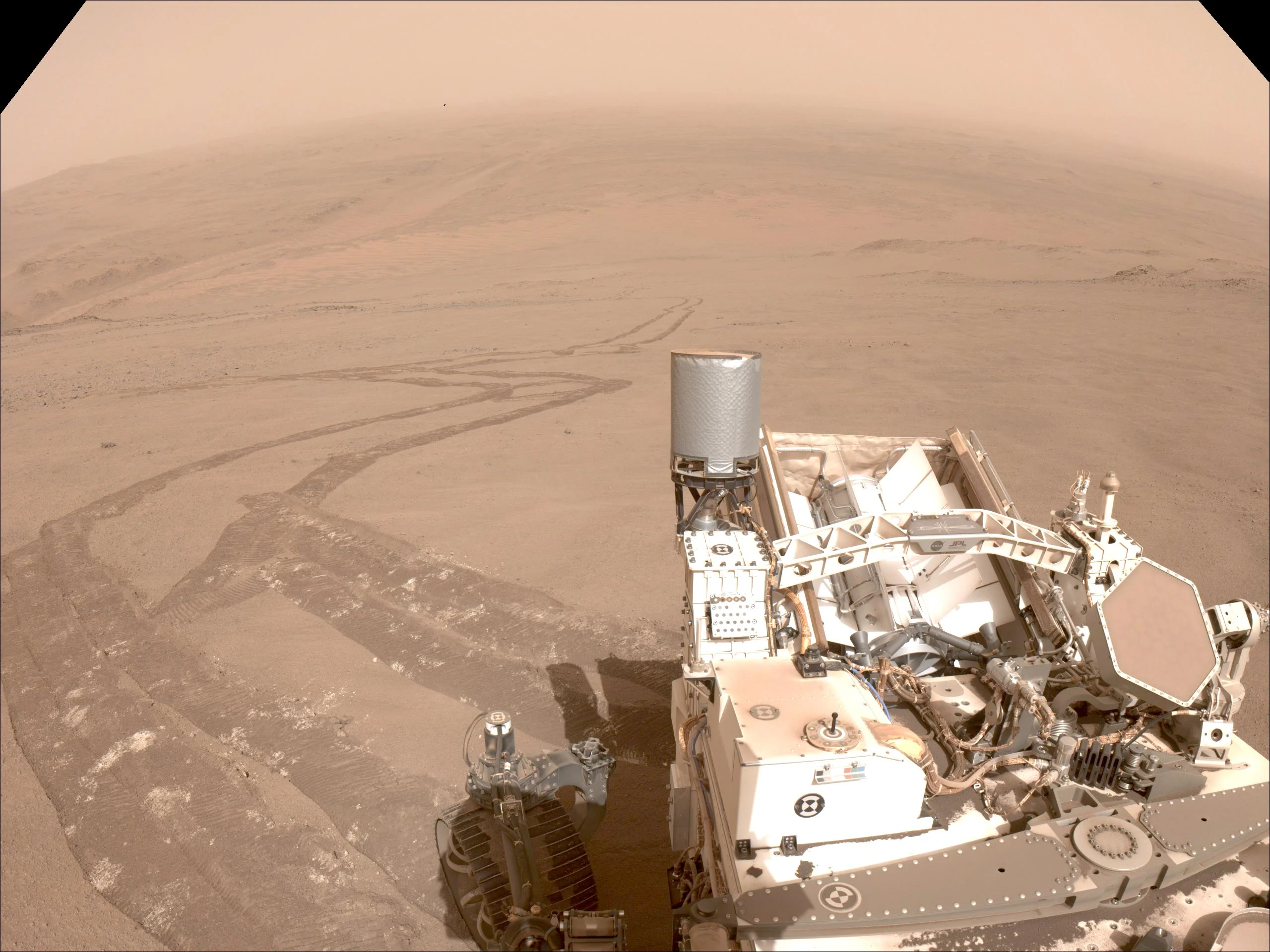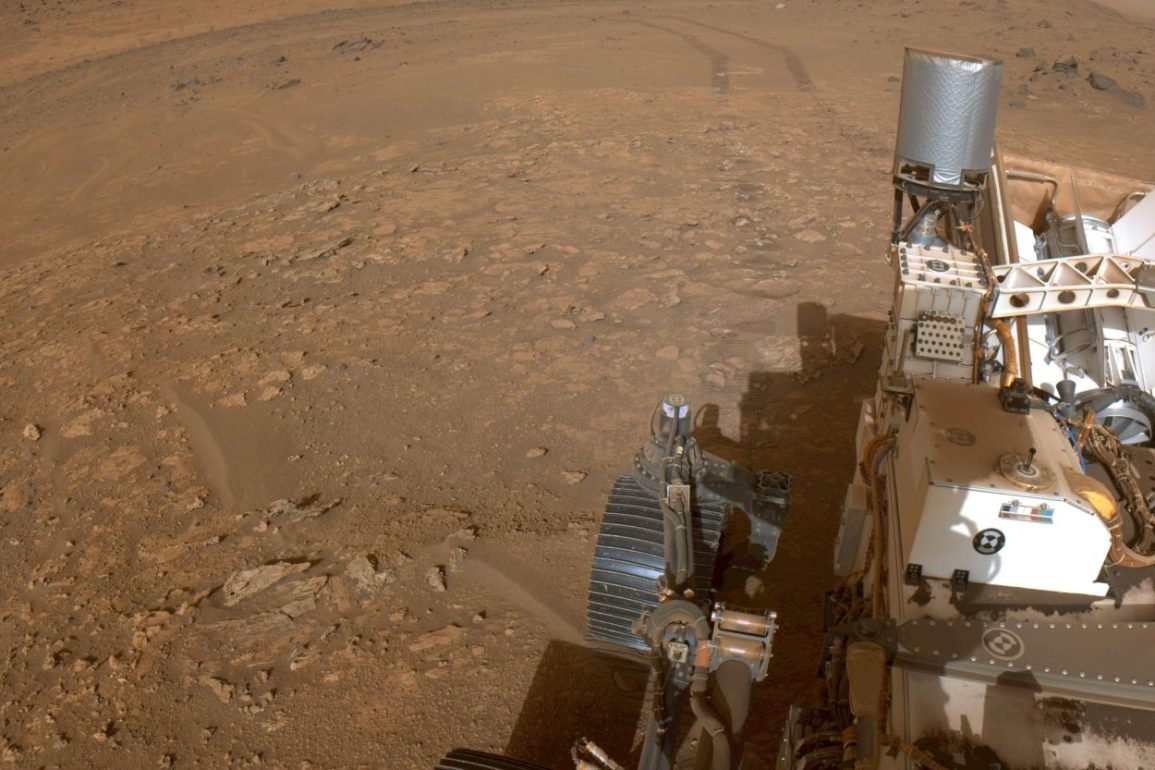NASA’s Perseverance rover is currently undertaking a challenging ascent up the steep western wall of Jezero Crater, with the goal of reaching the crater rim by early December. This climb presents several obstacles, including slippery slopes and rocky terrain, which the rover must overcome to explore scientifically significant locations, such as “Witch Hazel Hill.” The mission team is employing new driving strategies to improve traction during this difficult phase of the mission.
During its ascent, Perseverance has been capturing breathtaking images of Jezero Crater’s interior. A notable panoramic mosaic was created from 44 images taken on September 27, marking the 1,282nd Martian day of its mission.
This mosaic features various landmarks that have been pivotal throughout Perseverance’s 3½-year journey, including its landing site, the first encounter with sedimentary rocks, and Mars’ first sample depot. The striking image was captured near a location referred to as “Faraway Rock,” situated about halfway up the crater wall.
The panoramic view also reveals a challenging slope of approximately 20 degrees. While the rover has previously climbed inclines of similar steepness, this is the first time it faces such a gradient combined with a slippery surface. According to Rick Welch, Perseverance’s deputy project manager, the rugged terrain poses significant challenges that could impact the rover’s ability to reach its scientific goals.
To address the difficulties presented by the steep terrain, the mission team has modified its approach to driving. The rover has encountered loosely packed dust and sand that makes progress slower than anticipated. At times, Perseverance has only been able to cover about half of the distance expected on a firmer surface. Camden Miller, a rover planner at JPL, explained that this unique combination of steepness and slipperiness has led the team to brainstorm new tactics to facilitate the climb.

On October 3, the team implemented several experimental strategies to improve the rover’s performance on the slope. These tactics included having Perseverance drive backward, which research indicated could enhance traction under certain conditions.
The team also tried cross-slope maneuvers and approached the northern edge of “Summerland Trail.” Data gathered from these tests showed that staying close to the slope’s edge, where larger rocks are located, yielded the best traction results. However, the team remains prepared to adjust their plans as needed during the ascent.
In the coming weeks, Perseverance is expected to reach a site known as “Lookout Hill” on the crater rim. After this, the rover will continue approximately a quarter-mile (450 meters) to “Witch Hazel Hill,” which is believed to contain light-toned, layered bedrock based on orbital observations. The science team is eager to compare the geological features of Witch Hazel Hill with those at “Bright Angel,” where Perseverance recently collected samples from the “Cheyava Falls” rock.
Perseverance was designed to carry 43 sample tubes for collecting materials from Mars. To date, it has successfully sealed and cached 24 samples, including one atmospheric sample and three witness tubes. Initially, NASA aimed for the rover to store at least 31 samples, but additional tubes were included to account for the challenges expected on Mars.
Recently, two spare tubes were retired due to the risk of interference with the rover’s robotic arm, leaving Perseverance with 11 empty tubes available for future sampling efforts. This strategy not only enhances the rover’s scientific objectives but also supports plans for future missions to return Martian samples to Earth for thorough analysis.

